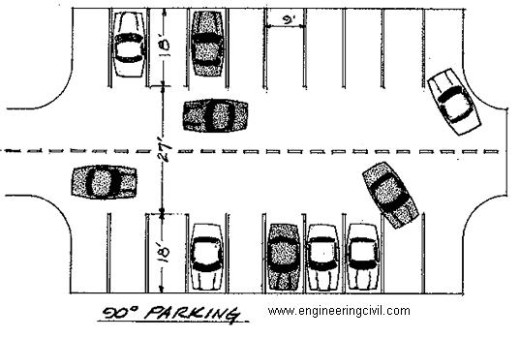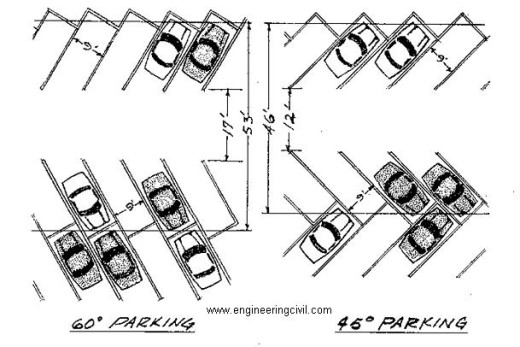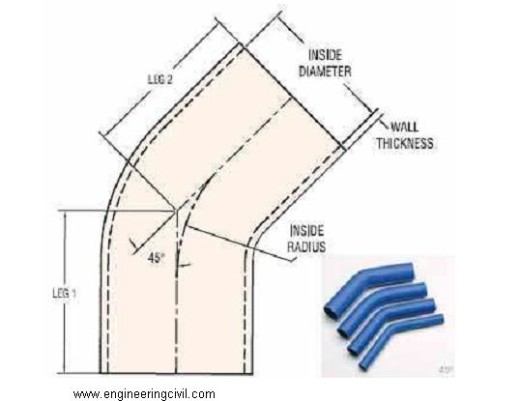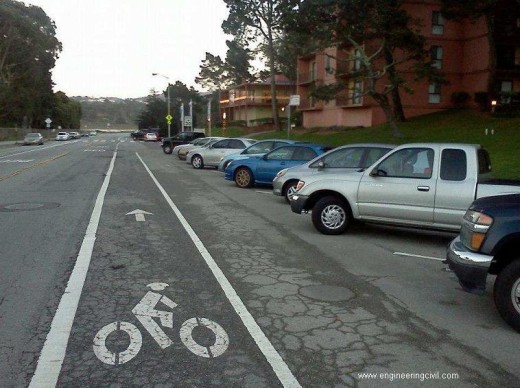By
Er. Navneet Kumar
DEPARTMENT OF CIVIL ENGINEERING
ITM UNIVERSITY, GWALIOR
Abstract
“License to drive is not a license to kill”. The unscrupulous growing population has created many problems in country like India. One of the challenging ones being car parking which we confront almost every day. Besides the problem of space for cars moving on the road, greater is the problem of space for a parked vehicle considering that private vehicles remain parked for most of their time. While residential projects still escape with designated parking, the real problem lies with commercial spaces many a time which is overcome by taking extra open spaces to park.
Multi-level Parking systems for sometime have provided relief since they come with a number of advantages – Optimal utilization of space, lower maintenance and operational cost, lower construction cost, secure and environment-friendly nature, comfortable for the drivers, cost saving for builders by saving height or depth.
Multiple Level Car Parking Systems are much in vogue a method of automatically parking and retrieving cars that typically use a system of pallets and lifts and signaling devices for retrieval. They serve advantages like safety, saving of space, time and fuel space but also need to have an extra and a very detailed assessment of the parking required, space availability and traffic flow.
INTRODUCTION:-
PARKING
The growing population of India has created many problems – one of the challenging ones being car parking which we confront almost every day. Besides the problem of space for cars moving on the road, greater is the problem of space for a parked vehicle considering that private vehicles remain parked for most of their time. Roads are being built for cars to ply but are we also giving the vehicles enough space to park. Parking is one of the major problems that is created by the increasing road track. It is an impact of transport development. The availability of less space in urban areas has increased the demand for parking space especially in areas like Central business district.
PRELIMINARY STUDIES
Before taking any measures for the betterment of conditions, data regarding availability of parking space, extent of its usage and parking demand is essential. It is also required to estimate the parking fares also. Parking surveys are intended to provide all these information. Since the duration of parking varies with different vehicles, several statistics are used to access the parking need.
PARKING DATA
• Parking accumulation – It is defined as the number of vehicles parked at a given instant of time. Normally this is expressed by accumulation curve. Accumulation curve is the graph obtained by plotting the number of bays occupied with respect to time.
• Parking volume – Parking volume is the total number of vehicles parked at a given duration of time. This does not account for repetition of vehicles.
• Parking Load – Parking load gives the area under the accumulation curve. It can also be obtained by simply multiplying the number of vehicles occupying the parking area at each time interval with the
time interval. It is expressed as vehicles per hour.
• Average parking duration – It is the ratio of total vehicle hours to the number of vehicles parked.
• Parking Turnover – It is the ratio of number of vehicles parked in duration to the number of parking bays. This can be expressed as number of vehicles per bay per time duration.
• Parking index – Parking index is also called occupancy or efficiency. It is defined as the ratio of number of bays occupied in time duration to the total space available. It gives an aggregate measure of how effectively the parking space is utilized. Parking index can be found out as follows
Parking index = parking load/parking capacity × 100
Parking effects
Parking has some effects like congestion, accidents, pollution, obstruction to fire-fighting operations etc.
Congestion– Parking takes considerable street space leading to the lowering of the road capacity. Hence, speed will be reduced, journey time and delay will also subsequently increase. The operational cost of the vehicle increases leading to great economical loss to the community.
Accidents– Careless maneuvering of parking and unparking leads to accidents which are referred to as parking accidents. Common type of parking accidents occur while driving out a car from the parking area, careless opening of the doors of parked cars, and while bringing in the vehicle to the parking lot for parking.
Environmental pollution– They also cause pollution to the environment because stopping and starting of vehicles while parking and unparking results in noise and fumes. They also aced the aesthetic beauty of the buildings because a car parked at every available space creates a feeling that building rises from a plinth of cars.
Obstruction to firefighting operations– Parked vehicles may obstruct the movement of firefighting vehicles. Sometimes they block access to hydrants and access to buildings.
Types of Parking
On street parking:-On street parking means the vehicles are parked on the sides of the street itself. This will be usually controlled by government agencies itself. Common types of on-street parking are as listed below. As per IRC the Standard dimensions of a car is taken as 5× 2.5 m and that for a truck is
3.75× 7.5 m.
Off street parking:-Off street parking means vehicles are parked off the street itself. This will be usually controlled by commercial agencies itself.
Parallel parking:- The vehicles are parked along the length of the road. Here there is no backward movement involved while parking or un parking the vehicle. Hence, it is the most safest parking from the accident perspective. However, it consumes the maximum curb length and therefore only a minimum number of vehicles can be parked for a given curbed length. This method of parking produces least obstruction to the on-going track on the road since least road width is used.
Degree parking:- 300 parking in thirty degree parking, the vehicles are parked at 30 with respect to the road alignment. In this case, more vehicles can be parked compared to parallel parking. Delay caused to the track is also minimum in this type of parking 450 parking As the angle of parking increases, more number of vehicles can be parked. Hence compared to parallel parking and thirty degree parking, more number of vehicles can be accommodated in this type of parking.
600parking:- The vehicles are parked at 600 to the direction of road. More number of vehicles can be accommodated in this parking type.
Right angled parking:- In right angle parking or 900 parking, the vehicles are parked perpendicular to the direction of the road. Although it consumes maximum width curbed length required is very little. In this type of parking, the vehicles need complex maneuvering and this may cause severe accidents. This arrangement causes obstruction to the road track particularly if the road width is less. However, it can accommodate maximum number of vehicles for a given curbed length.
Necessity of Car parking
Optimal utilization of spaces Mechanical car parking system is a method of parking and retrieving cars by using pallets and lifts. It thus removes the need for lengthy drive ways and ramps, accommodating maximum cars in minimum space.
Can be constructed in minimum available space It can be sited above or below the ground or a combination of both and designed to accommodate any number of cars.
Low construction cost Parking schemes are cost effective as far as from construction point of view. As the system is operated automatically, added expenses of underground parking such as building structure, providing lighting and security are avoided.
Low maintainance and operational cost Operating cost is low since mechanical car parking systems requires less energy to run. There is no need for energy intensive ventilating systems as the cars are not being driven inside the parking lot.
Safety of vehicle Efficient parking pattern provide complete safety to a vehicle as parked cars are not accessible to anyone else. Damages or a dent to the car is avoided while parking through narrow drive ways.
Environment friendly Environmentally, mechanized car parking has much to offer. One of the greatest benefits related to conventional underground or open space parking, is the saving of ground space. Outdoor space saved can be put to good use with gardens and landscaping or additional buildings. It also significantly reduces noise.
Benefit to a driver Car driving now can become a pleasant experience. Mechanical car parking systems makes parking easier and less stressful as the driver does not have to drive through the entire parking lot looking for a place to park, nor do they have to attend the car when it is parked, thus saving a lot of time. Difficulty in parking in a tight corner is also eliminated.
CONCLUSIONS
As the land in metropolitan cities and other higher order cities becoming scarce and dearer and plots getting smaller conventional parking is proving infeasible. The solution for the parking requirements is the multi-level car parking system to maximize car parking capacity by utilizing vertical space, rather than expanding horizontally. The most popular choice in terms of technology preferred is automated (lift based) selected by nearly 70% of the users.
References:-
1) Optimal Automatic Car Parking System for Indian Environment
2) Gwalior traffic control
3) Gaya Municipal Corporation, Bihar
4) Miss Juhi Shrivastava, Assistant prof., Highway & Traffic Engineering,ITM UNIVERSITY,GWALIOR
5) Dr. Sajad Ahmad, Assistant prof, Dept. of Environmental sciences, Kashmir University
6) Manish Ranjan, Assistant prof, Electronics & Communication Dept., Global Nature Care Sangathan, Jabalpur (MP)
7) Richa Shrivastava, Assistant Prof, Electronics and Communication Department, Gyan Ganga
college of Engineering, Jabalpur (MP)
We at engineeringcivil.com are thankful to Er Navneet Kumar for submitting this paper to us. We are hopeful that this will be of great use to all those who are seeking information on parking related topics.
If you have a query, you can ask a question here.






